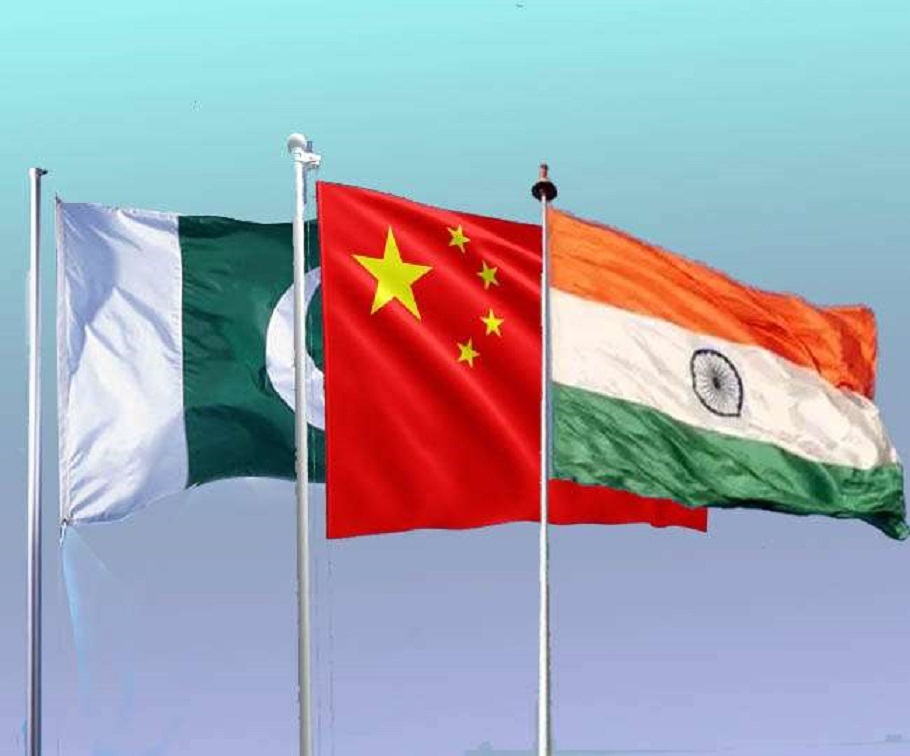India has successfully test-fired its Agni-V ballistic missile recently, marking a significant moment in South Asia’s deepening missile competition. While regional attention focused on the timing—just a week after Pakistan launched its Army Rocket Force Command (ARFC)—analysts argue the real message was not to Islamabad, but to Beijing.
Agni-V: A Message Beyond Borders:
The Agni-V, one of the world’s fastest ballistic missiles, is capable of delivering nuclear or conventional warheads over 5,000km—well beyond Pakistan’s borders and deep into Chinese territory. With a payload of over 1,000kg and hypersonic speeds reaching nearly 30,000km/h, the missile extends India’s reach across Asia and parts of Europe.
Though India has consistently framed its missile development within the scope of deterrence, the Agni-V’s range and capabilities make it clear that China is the principal concern. “Agni-V is a nuclear-capable ballistic missile of 5,000km range, which India has been developing as part of its nuclear deterrence capability against China. It has no relevance to Pakistan,” said Manpreet Sethi of the Centre for Air Power Studies.
This was India’s 10th Agni-V test since 2012, but its timing—just before Indian Prime Minister Narendra Modi’s visit to China for the Shanghai Cooperation Organisation (SCO) summit—was seen as deliberate. While relations between the two giants are thawing after years of Himalayan border tensions, India is signaling that it will continue bolstering its deterrence against Beijing.
China’s Factor in India’s Missile Doctrine:
India’s long-standing military doctrine has emphasized credible minimum deterrence. But with China rapidly expanding its own nuclear and conventional missile capabilities, India’s response has evolved.
“While the Agni-V might be usable against Pakistan, its primary mission would involve strikes on China,” said Christopher Clary of the University at Albany. “China’s east coast, where its most economically and politically important cities are situated, is hard to reach from India and requires long-range missiles.”
India is also developing the Agni-VI, expected to have a range exceeding 10,000km and be equipped with Multiple Independently Targetable Reentry Vehicles (MIRVs)—a capability already present in Agni-V. MIRVs allow a single missile to strike multiple targets, a clear escalation in strategic sophistication, and one aimed squarely at China’s vast geography and hardened targets.
Additionally, experts say the Agni-V test also serves as a technological stepping stone toward submarine-launched ballistic missile (SLBM) capability. With two nuclear-powered SSBNs (submersible ship ballistic nuclear) in service and two more under construction, India is methodically assembling a nuclear triad—land, air, and sea-based nuclear deterrence—crucial for second-strike capability against a peer adversary like China.
Pakistan Responds, But Within Regional Constraints:
In contrast, Pakistan’s missile development remains largely India-centric. While it recently announced the creation of the Army Rocket Force Command, aimed at addressing vulnerabilities exposed during a brief four-day conflict in May, its technological scope remains narrower.

Pakistan’s Shaheen-III missile has a maximum range of 2,750km—enough to reach all of India, but falling far short of Chinese targets. It also possesses the Ababeel, South Asia’s first MIRV-capable missile, but with a range of just 2,200km, making it the shortest-ranged MIRV-equipped system among nuclear states.
“Pakistan’s programme is entirely Indian-specific and defensive in nature, while India’s ambitions extend beyond the subcontinent,” said Tughral Yamin, a former Pakistani army brigadier. “India’s long-range systems are designed for global power projection, particularly vis-a-vis China.”
China’s Position:
Though China has not publicly reacted to the Agni-V test, Indian and Chinese strategic posturing has historically fueled mutual suspicion. Since the 2020 border clash that left dozens of soldiers dead, India has accelerated its strategic infrastructure development in the Himalayas and intensified military collaboration with the US and its allies in the Indo-Pacific.
Beijing is likely watching these missile developments warily, especially as India aligns more closely with Western powers. The Quadrilateral Security Dialogue (Quad)—involving India, the US, Japan, and Australia—is viewed by China as a containment strategy. India’s growing missile arsenal fits neatly into that narrative.
“India’s requirement for long-range missiles is dictated by its threat perception of China,” said Sethi. “It is a way of signaling capability and readiness, without compromising diplomatic engagement.”
Global Power Dynamics: Western Backing for India’s Rise:
Despite rising tensions, the international response to India’s missile ambitions has been muted or even encouraging. The 2008 waiver from the Nuclear Suppliers Group (NSG), despite India not signing the Nuclear Non-Proliferation Treaty (NPT), allowed it to trade nuclear material globally, solidifying its status as a de facto nuclear power.
Western powers, particularly the United States, view India as a counterweight to China. “The US and European powers have viewed and encouraged India to act as a net security provider,” said Mansoor Ahmed of the Australian National University.
Meanwhile, Pakistan’s similar ambitions have drawn criticism. A former White House official in 2024 warned that Islamabad’s pursuit of long-range missile capabilities posed an “emerging threat” to the US. This difference in perception highlights a growing strategic imbalance in the region.
Conclusion:
As India and Pakistan continue to modernize and expand their missile arsenals, the underlying motivations diverge sharply. While Pakistan’s missile programme remains focused on India, New Delhi has set its sights on deterring a far more powerful and globally influential adversary: China.
With the Agni-V test and the looming Agni-VI, India is not just engaging in a regional arms race—it is carving out a place in the global strategic arena, where the shadow of China looms large and long.

















